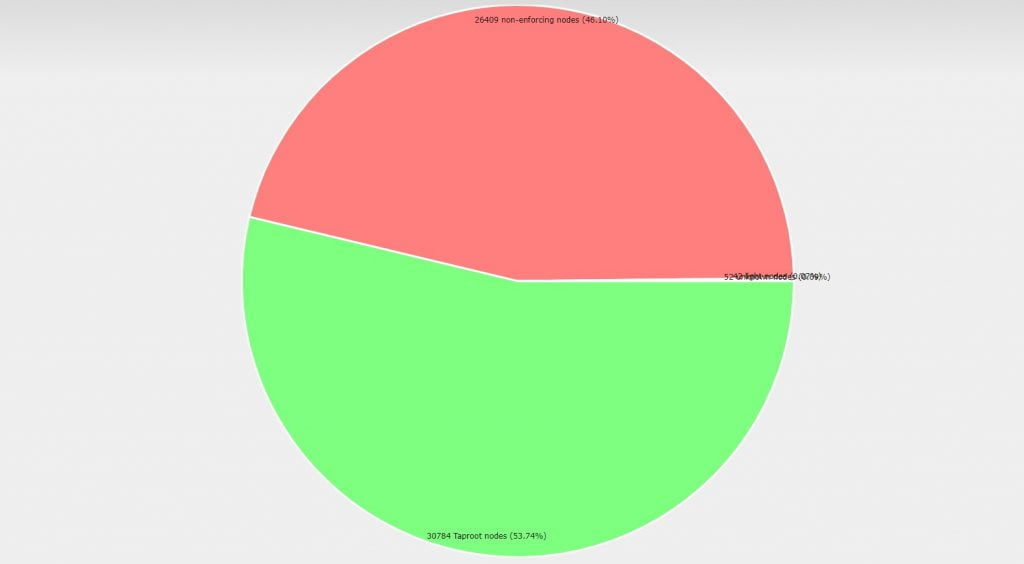With Taproot activation less than two weeks away, Bitcoin forking is still possible.
Precautions to take before Bitcoin’s Taproot goes live. Taproot is just around the corner, and one can already speculate on what its activation, which will occur around November 16, holds in store. One possibility is that, with less than 50% of miners upgraded to Taproot, the network will fork into two different “Bitcoins,” although this is highly unlikely.
Bitcoin Optech, a technical portal about Bitcoin, has published this Wednesday, November 3, in its weekly “Preparing for Taproot” section, a special on what will happen with this activation. Once the number 709,632 arrives, Bitcoin nodes with versions 0.21.1 and 22.0 of the Bitcoin Core client will start processing transactions containing Taproot.
However, an adverse scenario is possible: less than 50% of nodes will upgrade, and Bitcoin will fork. The probability that a fork happens is very low. According to Bitcoin Core developer Luke Dashjr’s portal data, managers have upgraded over 52% of nodes to Taproot. In previous days the figure was only 49.79%.


As a reference to this type of fork, Bitcoin Optech cites what happened with the soft fork of upgrade proposal (BIP) number 66 in 2015. The network forked into at least six blocks at that upgrade, marking a precedent within Bitcoin.
The risk of forking is still present in Bitcoin.
The forking of BIP-66 was due to miners starting to validate “invalid” blocks on a new chain. In this type of situation, once the miner realizes it and wants to return to the original chain, all confirmed transactions are invalidated, as they belong to another blockchain. To consider a Bitcoin payment irrevocable, you must wait for at least six confirmations.
The scenario that the network may fork may still exist when Taproot is activated. The situation would only occur if miners deliberately mine invalid blocks from the main Bitcoin network. Rogue miners would use “Taproot exits” and disable the security measures within the Bitcoin Core protocol.
For a miner to be motivated to mine invalid blocks voluntarily, they must be willing to lose 6.25 BTC (about $380k) for the blocks they mine. That scenario looks unlikely, as Bitcoin Optech sees it.
“The best and most likely outcome is that everything works out. Nothing that happens should be visible to normal users. Only those who carefully monitor their nodes or try to create Taproot transactions should notice anything.” Getting ready for Taproot #20, Bitcoin Optech.
Recommendation during Taproot Activation
As discussed throughout the text, Taproot arrives at block 709,632. Although the scenarios of possible forks are very remote, Bitcoin Optech recommends taking precautions against potential complications.
The main one is in the number of confirmations. Due to the BIP-66 background, Optech recommends placing a confirmation window larger than six blocks, as high as 30 confirmations. This is when Taproot is finally activated.
Waiting for some confirmations will ensure that in the case of the network forks with Taproot activated, the payment confirmation transaction validates within the correct Bitcoin network. You should consider the mentioned recommendation before Taproot starts in block 709.632.
Related Posts
- What is a Crypto Whale Tracker?
- ADA Pay, the Cardano Payment system.
